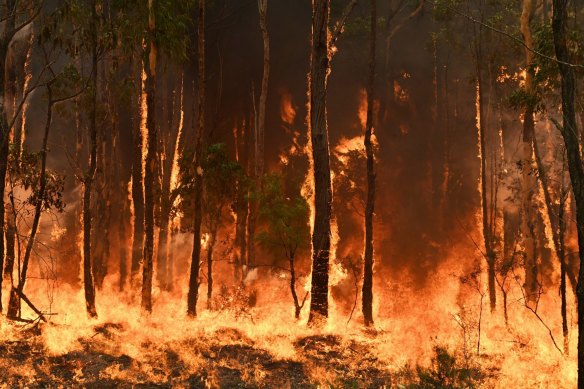Demystifying BAL Reports: A Guide to Recognizing Your Residential or commercial property's Bushfire Threat
Demystifying BAL Reports: A Guide to Recognizing Your Residential or commercial property's Bushfire Threat
Blog Article
How BAL Report Impacts Bush Fire Security Procedures
In the realm of bush fire defense, the Structure Assault Degree (BAL) report stands as an important tool that considerably affects the safety and durability of homes in fire-prone locations - BAL Report. The influence of a BAL evaluation extends much beyond simple documentation; it serves as the keystone for establishing the appropriate building and construction criteria and fire protection measures needed to reduce the risks postured by bushfires. As neighborhoods face increasingly serious fire seasons, comprehending just how the BAL report shapes these safety measures ends up being critical for builders, house owners, and policymakers alike
Recognizing the Bushfire Assault Degree

Relevance of BAL Record Assessment

Moreover, the BAL report analysis serves as a foundational action in abiding by lawful responsibilities and demands connected to bushfire defense. Regional councils and authorities usually mandate the entry of a BAL report as part of the planning and building approval process to make certain that properties are effectively safeguarded against bushfire dangers. Falling short read review to carry out a thorough BAL report evaluation can result in poor defense measures, leaving residential properties at risk to ruining bushfire incidents.
Building And Construction Standards Based Upon BAL
A detailed understanding of the Bushfire Attack Degree (BAL) enables building owners to apply construction standards customized to their certain danger account. Building and construction criteria based on BAL are critical in minimizing the effect of bushfires on residential properties. The BAL score classifies the possible site here threat a property encounters throughout a bushfire on a scale from BAL-Low to BAL-FZ (Flame Zone)
Carrying Out Fire Defense Actions
With the foundation of building requirements based on Bushfire Strike Degree (BAL) in place, the focus currently moves in the direction of the practical execution of fire defense procedures to fortify homes against bushfire dangers. Easy actions include using fireproof structure materials, installing ember guards on vents, securing gaps in wall surfaces and roofings, and keeping a clear area around the home free from combustible greenery. By incorporating both passive and energetic methods, properties can considerably reduce their vulnerability to bushfire events and raise the safety of passengers.
Safeguarding Residences Versus Bushfires
Effectively protecting homes versus the devastating effects of bushfires requires a positive and comprehensive technique to fire protection actions. Furthermore, securing gaps and vents to protect against cinder invasion, as well as integrating fire-resistant doors and windows, can aid strengthen the home's protection against bushfires. By welcoming a positive position and integrating these safety steps, home owners can considerably increase their chances of safeguarding their homes against bushfires.
Verdict
To conclude, the Bushfire Assault Degree (BAL) web link record plays an important role in determining the essential defense procedures against bushfires. By analyzing the BAL, building criteria can be tailored to alleviate the risks and make sure the safety of homes in fire-prone areas. Implementing fire protection actions based upon the BAL report is vital in protecting residential properties from possible bushfire dangers. It is critical for home owners to focus on BAL assessments and comply with advised construction standards to boost bushfire strength.
In evaluating bushfire threat to residential or commercial properties, comprehending the Bushfire Attack Level (BAL) is a crucial part for applying effective security measures. Generally, a clear understanding of the Bushfire Strike Level is necessary for implementing adequate defense actions and reducing the impact of bushfires on residential or commercial properties.

Report this page